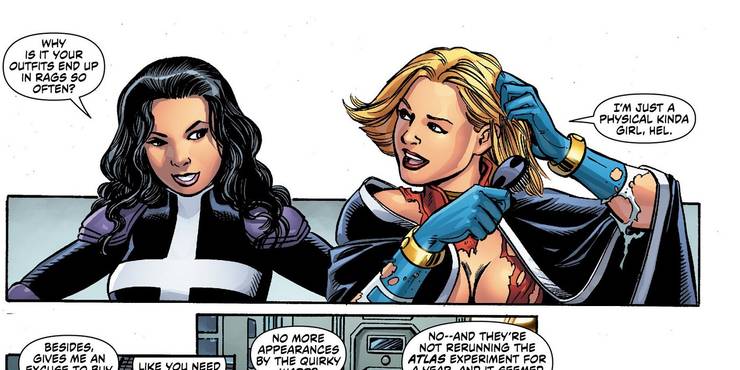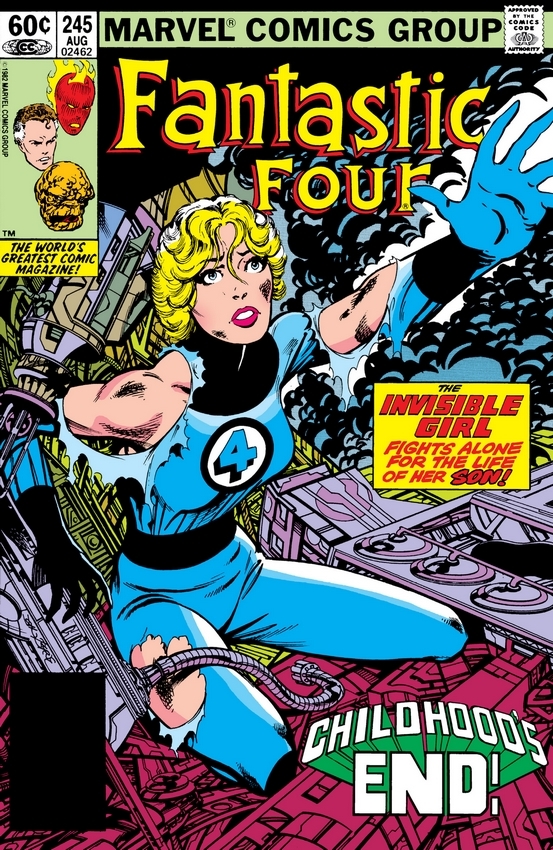
A Sense of Doubt blog post #2007 - From Crack! Pow! Wham! INTERREGNUM (iii): Comic Book Logic, Torn Costumes and Violence
Eager as I am to catch up, just a share today with some extra images and some 2007 content.
Thanks for tuning in.





/cdn.vox-cdn.com/uploads/chorus_image/image/65270229/IMG_2222.0.jpg)
http://crackpowwham.blogspot.com/2017/07/interregnum-iii-comic-book-logic-torn.html
INTERREGNUM (iii): Comic Book Logic, Torn Costumes and Violence
Doc Savage is the most well known precursor to modern-day super-heroes, and several authors have already noticed the striking similarities between this Man of Bronze and Siegel & Schuster’s Man of Steel. In fact, Doc Savage stands in the unmarked frontier between pulp fiction and comic books, serving as the prototype to both Superman-like heroes and Batman-type action-detectives, as well as several other tropes. In his crime-fighting and adventurous career, Savage fought criminals, mad scientists and natural monsters, including dinosaurs, and had to survive firefights, crashing planes, sinking subs, fires, explosions, and everything else ‘Kenneth Robeson’ (mostly Lester Dent) could think of. As a result of such extreme adventures and near-misses, the tattered shirt of Doc Savage became a permanent fixture of the character in such diverse media as pulp covers, comic books, graphic novels and films, functioning as a signifier of extreme violence. By means of contrast, injuries were kept to a minimum, mostly never more than a broken lip or a bleeding nose. It was as if the damage suffered by his costume/clothes stood for the intensity of the violence he had to suffer through. Very much as it goes in cartoons (printed or animated) where a character (say Bugs Bunny or Donald Duck) after surviving an explosion, is shown with body blackened and clothes in tatters for a few seconds, before regaining his normal un-disheveled appearance. And such graphic practice was transmitted to comics from its very beginnings.
As I will explore in my next post (the last of the two-year-in-the-making introductory posts to this blog), the superhero costume is very much part and parcel of the hero’s identity and personal definition; something that shouldn’t need further explanation as through the years we’ve seen different characters assume the mantle of iconic super-heroes like Batman, Batgirl, Robin, Captain America, Black Panther and such, implying that besides the particular powers specific to each character, it truly is the costume that makes the hero. Even when, as is the case with Doc Savage, the costume is merely defined by tattered clothes, something equally valid when dealing with Savage’s own female version: his niece Pat Savage.
I’ll admit that what I’m about to posit needs a little more statistical confirmation, but I’ll advance it anyhow in the spirit of impressionistic empiricism: as Mulvey, Dworkin and McKinnon’s unsubstantiated assertions on female objectification and identification of sex with violence drove feminist and extreme-right reaction against female (and even male) exposed flesh, comic book creators started putting forth lame explanations for costumes not to get torn to shreds.
I guess one can set CRISIS ON INFINITE EARTHS as the representational turning point, with a bevy of costumes being torn as entire earths and heroes were swiped clean, culminating in the torn and bleeding Supergirl dying with her costume in tatters, a confluence of torn costume and injuries, and a vision not soon to be repeated. In his re-imaginings, Byrne would erase the smallest rip from Superman or Wonder Woman’s costumes, with ridiculous explanations of bodily auras that would protect the cloth in contact with the hero’s skin, and generating endless jokes about the incredible number of capes Superman had to replace.
However, as the successive torn capes made clear, even Byrne felt that the costume in tatters was the best way of representing the outcome of physical violence, short of representing the real outcome of violence itself. That is: broken teeth, black-and-blue pulped flesh, broken bones and lots of blood. And, in a way, that’s the way comics went under the neo-victorian code of representation. Intact costumes would demand and bring forth ever more excessive degrees of physical violence. Thus, we went from something like this:
to things like these:
Of course, for the progressive politically-correct noisy minority, violence is always preferable to sex, blood to breasts, death or mutilation to pin-up poses, better to allow them to hypocritically rage over their filled-to-capacity refrigerators. And so, the blood for intact costumes mode of representation became dominant in the major publishers, and affected both male and female characters. Case in point, one of my first pre-adolescent objects of desire: Ms. Marvel (Carol Danvers).
In the seventies, after she emerged from the shadow of Capitain Marvel, Carol Danvers became one of the most popular female superheroes, Marvel’s worthy response to DC’s more tame Supergirl (also a Danvers, and my first ever comic book crush), even if not to ür-Superheroine, Wonder Woman. Hailed as a feminist and progressive icon (something over which not all feminists are in agreement – what else is new?), she nonetheless figured in two cult-covers from her own magazine, where torn costumes are used as effective pointers to the level of menace facing Ms. Marvel (even if not at all faithful to the stories within).
Both covers substitute the torn costume for any bloody signs of violence, which could be confused with topic domestic violence, or battery and assault (and Odin knowns the sexual readings that radical progs, fed with Freudian-mush, already get out of the covers as they are). But, as I stated above, torn costumes had to go, to be replaced by more overtly violent graphics. Now the question is how to represent that level of violence when the one on the receiving end is a super-powered, practically indestructible, super-being, without letting it slide into cartoon caricature? And the answer is: not easily.
Let us consider MS. MARVEL #18-24 (2007-2008), a set of books that comprises the “Puppets” and “Monster and Marvel” story-arcs, both of them easy fodder to varied readings and interpretations. However interesting as they are (and I intend to do a go-over around “Puppets” in the future), it is not the stories per se that I want to tackle now, but the graphic representation of violence, as it escalates towards a maximum of absurdness of which the creators seem not to be aware.
It begins in MS. MARVEL #18, when our heroine is hit point-blank with a grenade that literally explodes on her face without causing the smallest rip on her costume.
If one was to take that as a little bit absurd but still within the bounds of comic book logic, issue 20 brings a quick escalation of power-yield, as Carol once more comes out unscathed from what appears to be a multiple-megaton blast.
Needless to say, despite emerging from the blast amidst a maelstrom of raging fire, her costume remains equally unscathed.
Immediately in the same issue, Ms. Marvel’s quarters aboard a S.H.I.E.L.D. light helicarrier are destroyed in another impressive explosion when hit by an alien missile.
And again, there seems not to be any amount of energy capable of damaging Carol’s costume:
But if you thought that impressive, by issue #21, Carol drops from the outer atmosphere of some alien world… in her pajamas… which miraculously come equally unscathed from the fall and the friction and the heat generated by both.
And there’s no way in hell that repeated references to the “blue stuff inside me” can explain the indestructibility of Carol’s clothes. And it doesn’t stop here, as the creators (writer Brian Reed and penciler Aaron Lopestri) go one over the top and in MISS MARVEL #24 don’t shy away from a good-old nuclear blast at close range in the plain vacuum of space:
It is a spectacular blast that sends the equally indestructible alien creature careening through space, gaining Ms. Marvel – and Earth – some well needed time.
Of course, once again, both Ms. Marvel and her unbelievably resilient costume survive unscathed, even adding another vertiginous fall through the atmosphere.
Both story arcs from which the images above were selected are told with verve, both literary and visual, and one comes out of them with a distinct impression that its authors are aware they are straining the good will of their readers in accepting that a mere piece of cloth could survive such rough handling; not only that, one senses they know their readers will swallow it whole, because not to do it would be politically incorrect. (Surely they wouldn’t believe their story was so brilliant one wouldn’t notice how synthetic fabrics can withstand nuclear explosions and temperatures as close to those of the sun as they can get.) Underlining these impressions, is the fact that in MS. MARVEL #21 the issue of Carol Danvers/Ms.Marvel’s identity is broached in a pertinent way, denying any exceptionality to Carol/Ms.Marvel’s costume: “We’re the same person. I am Ms. Marvel. It’s just a costume”.
Now, one can argue that something in Ms. Marvel’s powers can keep her clothes intact; not only her uniform, but also her pajamas. That somehow, Carol’s invulnerability extends to whatever she’s wearing. But how could this happen?
True, in issue #23, Carol discovers that the alien Cru can “turn her powers off”. Certainly that could explain how the alien’s sting could penetrate through Carol’s costume and Carol’s flesh. Bu then how to explain this in MS. MARVEL #19?
Despite catfighting Tigra (no pun intended) for over two pages (ok, one’s a splash page) and then tackling Silverclaw for two more, Ms. Marvel comes away bleeding from her torn cheek, but with her costume absolutely pristine: again, with costume intact in order not to raise the ire of the righteous left, it is necessary to draw (pun intended) blood. (It is true that in the story, the scratches on Carol’s face are a contrivance used to subdue Ms.Marvel through a toxin in Tigra’s claws, but that does not explain how could the striped ex-Avenger break Ms.Marvel’s atomic-blast-proof skin.)
I think I illustrated – although briefly , and without delving too much on the details of both story arcs, resting on a more visual approach – how I think that the politically correct refraining from present the female characters in ways that could eroticize them through too much exposed flesh , or even equate too uncomfortably eroticism and violence (not that they are mutually exclusive, quite the contrary, but remember this is literature for children – some, quite sophisticated children, but children nonetheless) led to the need to represent more blood and bodily maiming to convey the same degree of danger and menace that yesteryear was conveyed by torn clothes.
So it is that we see Carol Danvers scratched and bleeding, with her back torn by the barbed tendril of Cru, blood running like gravy from her rendered flesh, but with costume proper and primly intact, surviving explosions and nuclear blasts. Carol’s costume in this pages seems like the huge elephant in the middle of the room, that everyone is pretending no to notice. And more than following comic book logic, it calls our attention for nothing as much as those old Disney comics: for kids, you know!
http://www.thepeoplehistory.com/2007.html
United States -- IPhone Announced
NASA Launches Phoenix Mars Lander



MY LIFE IN ULTIMATE IN 2007
HUCKFEST!
 |
| Huckfest 2007 - Me and Dave Heimberg |
KUDL - YEAR TWO
 |
| 2007 KUDL team - White Castle of Bunnincula |
MUSL - 2007
 |
| Little Andy - team captain Venom 2007 MUSL |
 |
| Team Venom - champions MUSL 2007 |
My birthday 2007
Mom preparing French Bread for my birthday in 2007. She's having a good year!!
Maria and I went to a Tigers game!
Preparing for MUSL costume night 2007!
My Friend Stevie Pitts had a little party for us to play Magic the Gathering.
Mom and I went to Hardings in 2007. She drove her power chair and I walked.
Also, I took Mom to the Richland art fair, and she bought a blue bowl. I use that bowl all the time now that she has passed away.
It was a good year.
Also, today would have been my parents' 62nd wedding anniversary.
 |
| 39th wedding anniversary - 1997 |
 |
| 40th wedding anniversary - 1998 |
 |
| my parents - wedding photo - married August 16th, 1958 |
 |
| Me and my friend Helene Dunbar 1987 - Kalamazoo - Chinese restaurant |
+++++++++++++++++++++++++++++++++++++++++++++++++++++++++++++++++++++++
+++++++++++++++++++++++++++++++++++++++++++++++++++++++++++++++++++++++
+++++++++++++++++++++++++++++++++++++++++++++++++++++++++++++++++++++++
- Bloggery committed by chris tower - 2008.16 - 10:10
- Days ago = 1871 days ago
- New note - On 1807.06, I ceased daily transmission of my Hey Mom feature after three years of daily conversations. I plan to continue Hey Mom posts at least twice per week but will continue to post the days since ("Days Ago") count on my blog each day. The blog entry numbering in the title has changed to reflect total Sense of Doubt posts since I began the blog on 0705.04, which include Hey Mom posts, Daily Bowie posts, and Sense of Doubt posts. Hey Mom posts will still be numbered sequentially. New Hey Mom posts will use the same format as all the other Hey Mom posts; all other posts will feature this format seen here.






































No comments:
Post a Comment